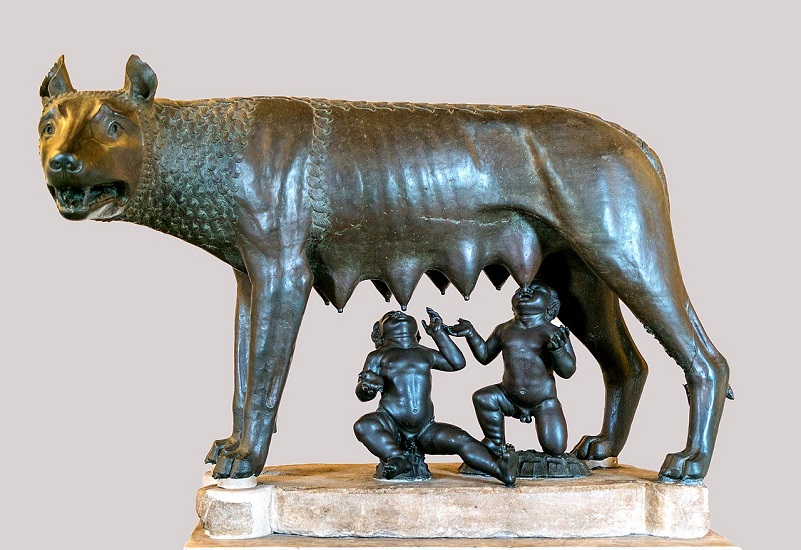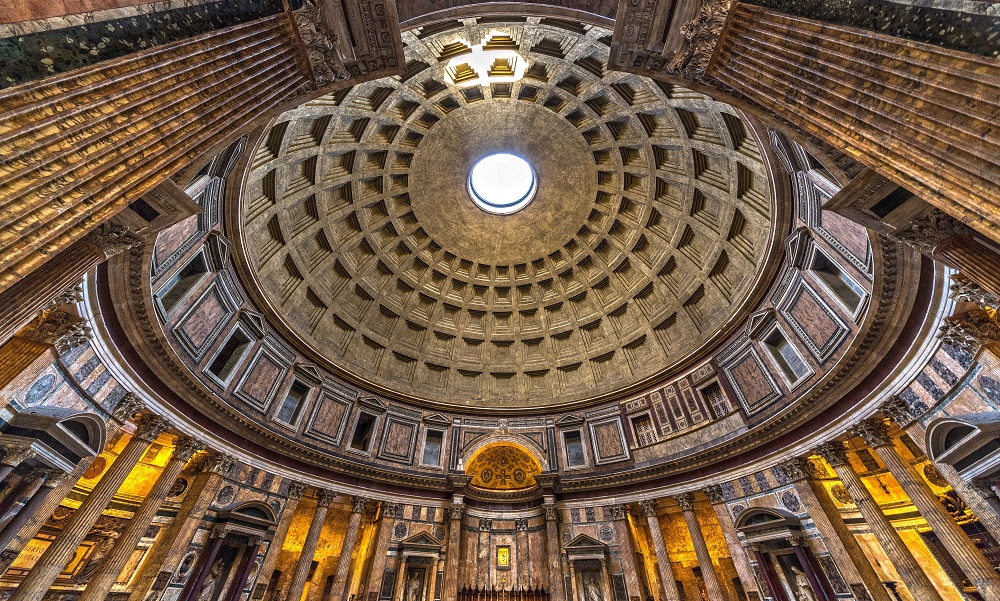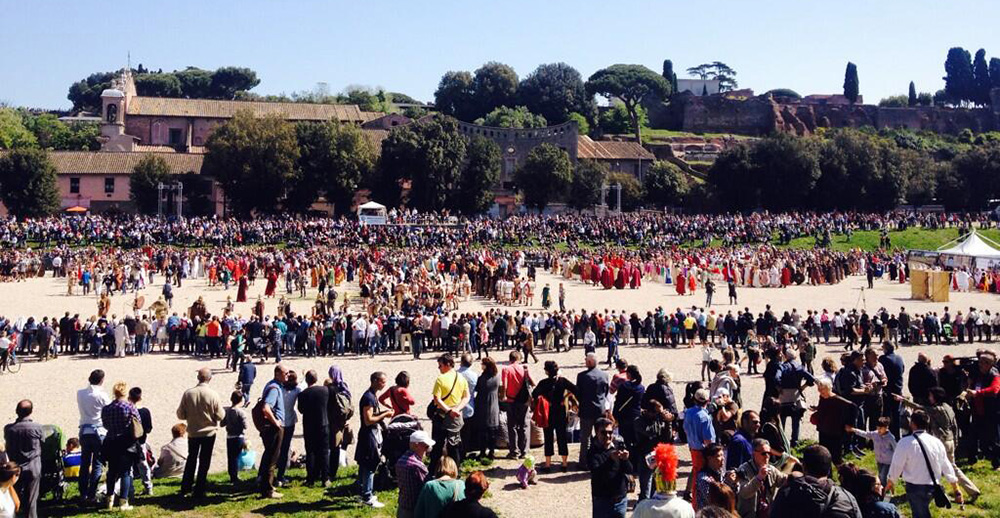On April 21, Rome celebrates its 2777th birthday. Here are the most fascinating legends and traditions which can still be experienced today in the Eternal City.

The Capitoline She-wolf at the Capitoline Museums
According to a legend narrated by Varrone, Rome was founded by Romulus on April 21, 753 BC.
The date of Rome’s Birth was established thanks to the astrological calculations of Lucio Taruzio Firmano, philosopher and mathematician from the 1st century BC, and friend of Varrone and Cicerone. Until the adoption of the Gregorian Calendar starting from the birth of Christ (Anno Domini), Roman chronology began with the foundation of the City, (Ab Urbe condita).
Emperor Claudius was the first to celebrate the anniversary of Rome in 47 AD., eight hundred years after its foundation. The celebrations for the first millennium of Rome were organized in 248 AD. by Filippo l’Arabo during the Ludi Saeculares. The enthusiasm of the Romans for the Saeculum Novum was even depicted on a coin with the inscription “1001“.
Over the centuries, the date of April 21 has been acquiring different meanings. During the Imperial Age, the Feast of San Cesareo (Kaisarios) was celebrated, in honour of the emperor and his saint protector. Many centuries later, for a certain period of time, even Labour Day, on May 1, had coincided with April 21.
Many traditional celebrations have been lost but Rome’s Birthday was revived by Risorgimento as a national holiday in the Italian Capital. In fact, in 1871, the Italian flag was hoisted on the tower of the Capitol Hill and, in 1913, all the Italian Municipalities delivered to then Mayor Ernesto Nathan a commemorative plaque.

Two spectacular traditional events are planned for the 2777th Birthday of Rome: a beam illuminating the entrance door to the Pantheon at 12.00 on April 21 and the historical re-enactment of Rome’s Birthday performed by the “Gruppo Storico Romano”, which takes place from April 19 to 21, 2024 at the Circus Maximus, the Imperial Forums, and the Colosseum.

On April 21, at noon, the sun filters through the dome of the Pantheon creating an extraordinary effect. The light enters from the oculus and hits the entrance door, through which the Emperor accessed. It is said that, on the day of Rome’s Birthday, at high noon, the Emperor Augustus crossed the threshold of the temple. Reflecting on the bronze door, the sun rays illuminated him, producing a theatrical amazing effect.
The dome is in fact a giant spherical sundial, which marks the seasons. The Pantheon was commissioned by Agrippa between 25 and 27 BC. to honour the Gods. It was then rebuilt between 118 and 125 AD. by Hadrian, a passionate about astronomy.

The historical re-enactment of Rome’s Birthday winds through the most representative sites in Rome. This journey through time involves Legionaries, Vestals, Emperors, Gladiators, and all the Romans living from 753 BC to the fourth century AD. Every year, the historical commemoration of the “Gruppo Storico Romano” is dedicated to a special theme. In 2024 they focus on the Roman Roads, of incalculable importance in the human history.
The event brings to life the landing of Aeneas on the coasts of Lazio and the meeting between Mars and Rea Silvia, mother of the twins found by the shepherd Faustolo and his wife Acca Larenzia. In the end, the tracing of the furrow and the fratricide of Remus by Romulus are represented.
Among the key events not to be missed we find the Commissio Feriarum, a ritual with six vestals lighting a fire, and the Historical Parade with around 2,000 participants as well as, this year, 79 associations from 15 European nations.
Let us get lost in the history of the Eternal City and relive its splendour during the Birthday of Rome!
